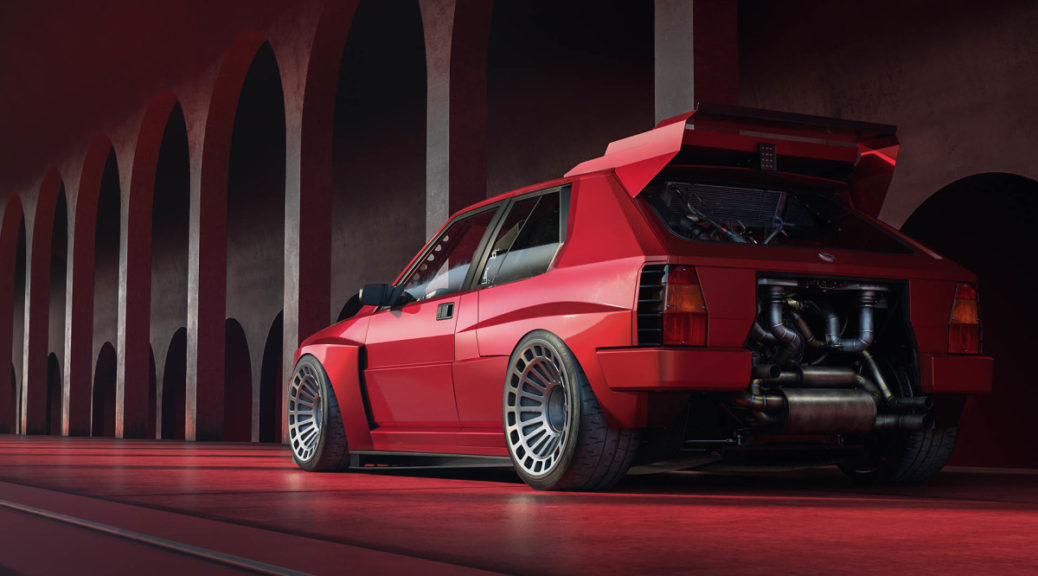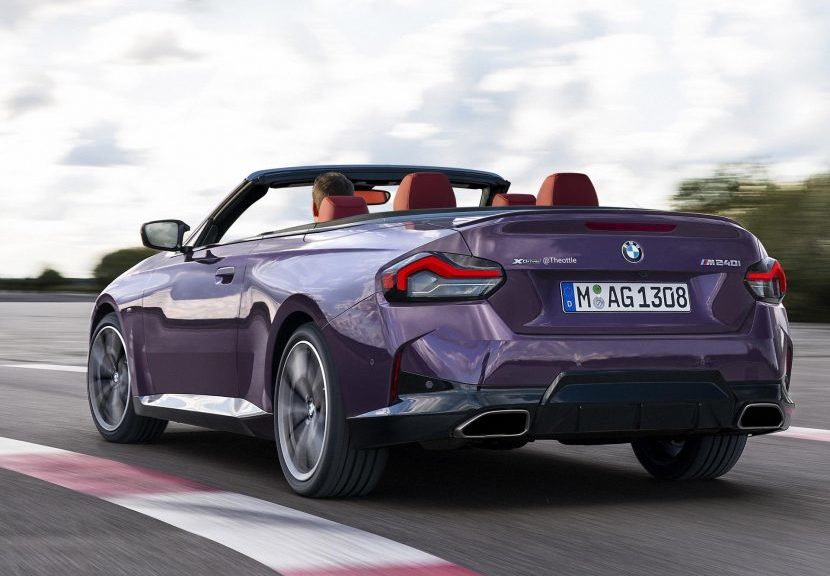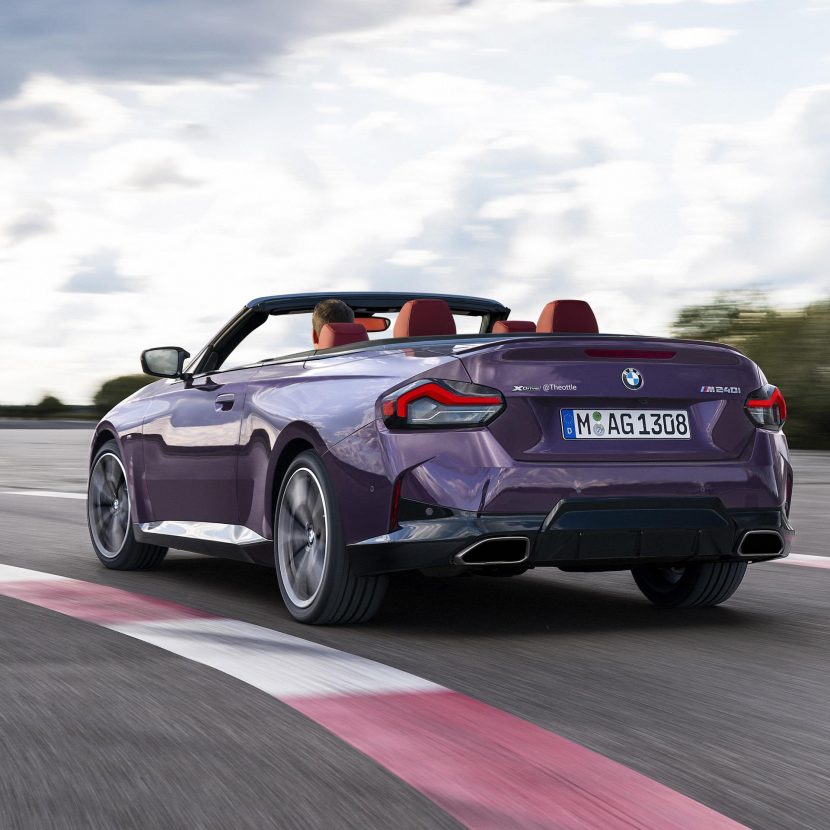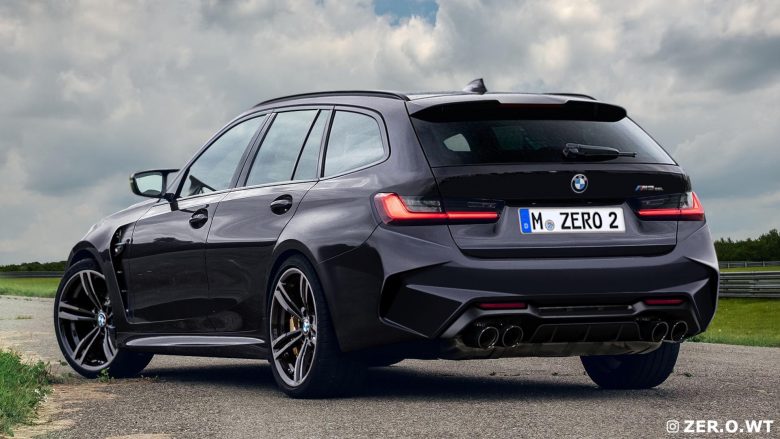<!–
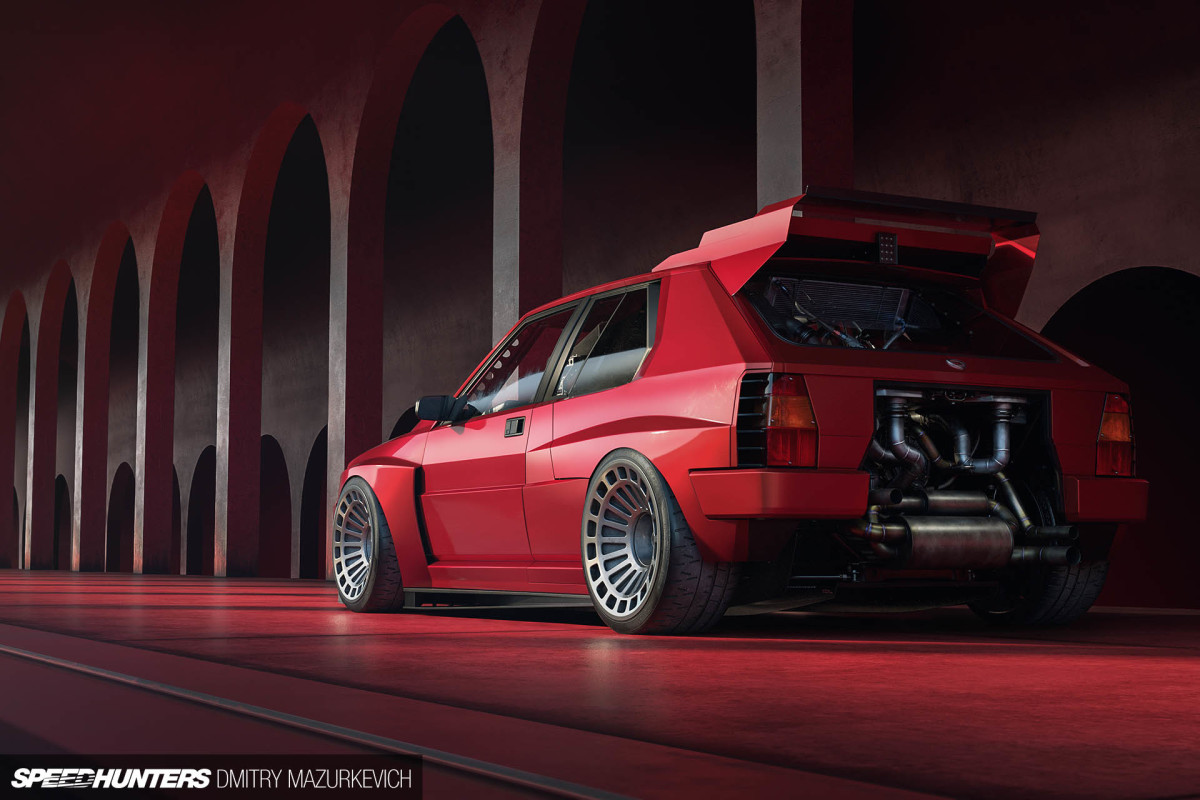
What you are seeing here is a variety of things.
Firstly, it’s Dmitry Mazurkevich’s creative look into a possible second evolution of a Lancia Delta Group B rally car. Secondly, it showcases the amazing power and realism of CGI, and at the same time – the third point here – the immense possibilities that modern computer-aided design unlocks.

It fills me with joy that we are currently experiencing somewhat of a rebirth in coachwork customs. Aside from the fact that companies like McLaren and Lamborghini have been capitalizing on the practice of re-dressing halo cars into limited edition design studies, it’s the smaller outfits that I’m really talking about here.
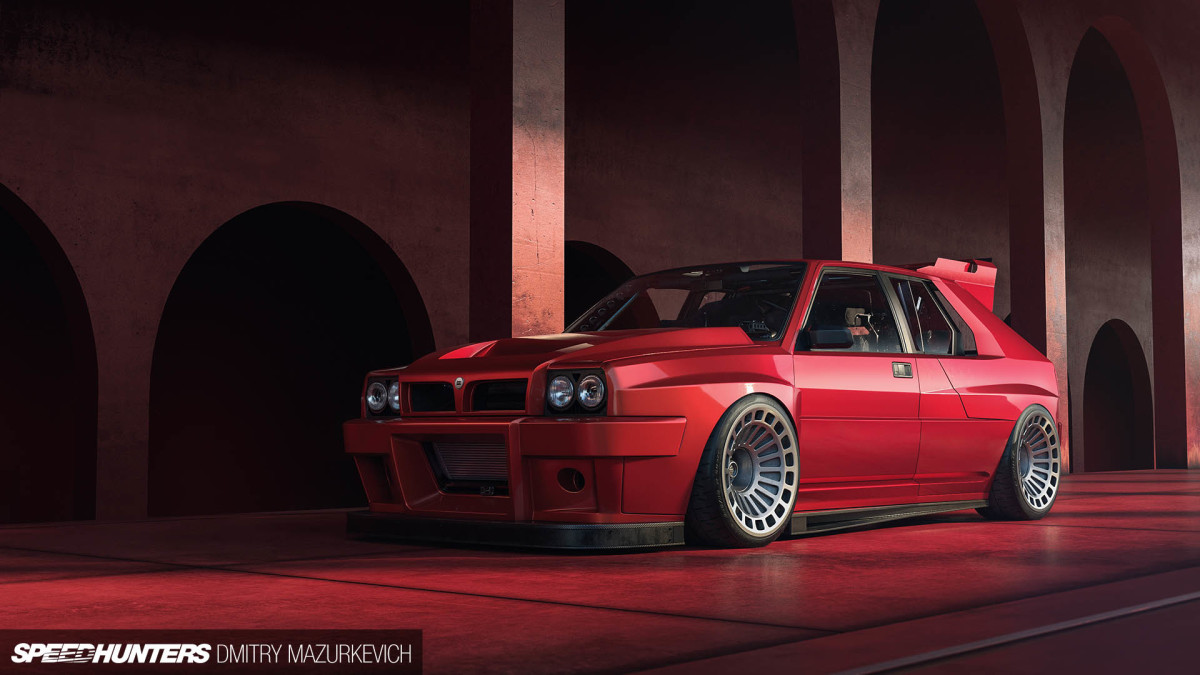
Fittingly, Automobili Amos and their Delta Futurista comes to mind, as does the MAT Stratos and the Kimera EVO37.
It’s because of CAD and CGI that companies like these are able to speed up the R&D and engineering process and then rapid prototype to test out and sign off for final low-volume production. It’s a far cry from the days where a bodywork specialist would take his array of hammers and dollies and an English wheel in order to re-skin a sports car, working on it for nine months or more.
What we are able to do in today’s world, visualize a car virtually and then 3D print it at scale before going to final production, is bringing about a new era of creativity and personalization.
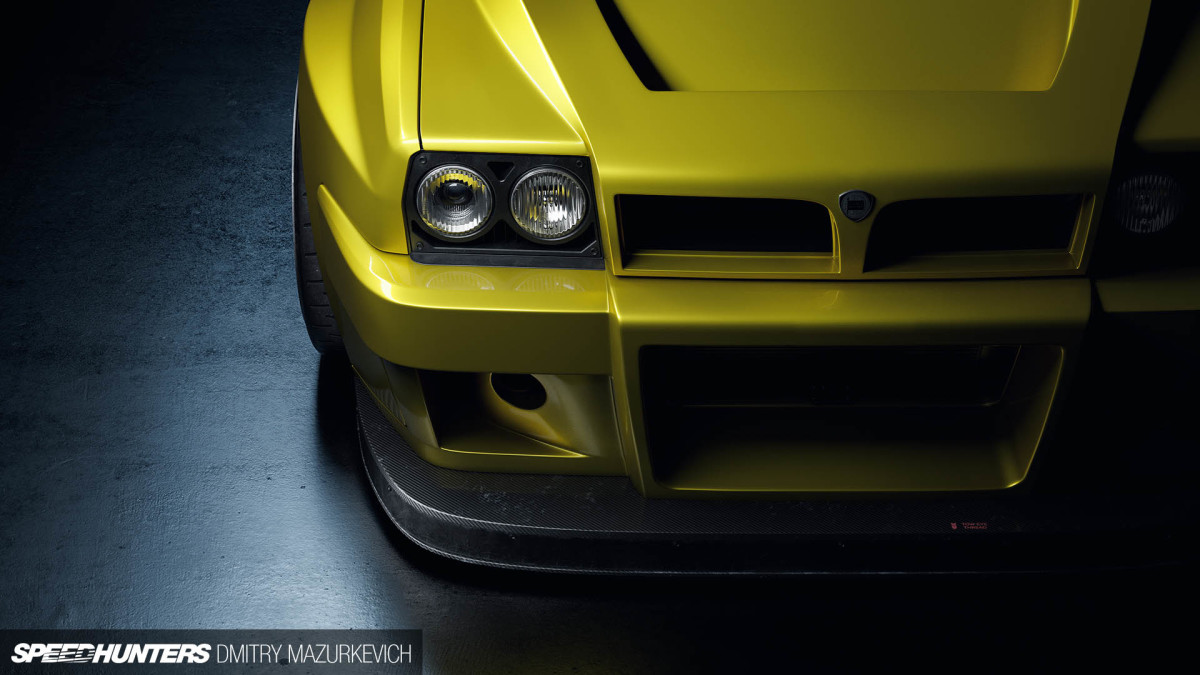
Which brings us to Dmitry’s digital Delta concept, which he’s finished in two very appropriate colors.
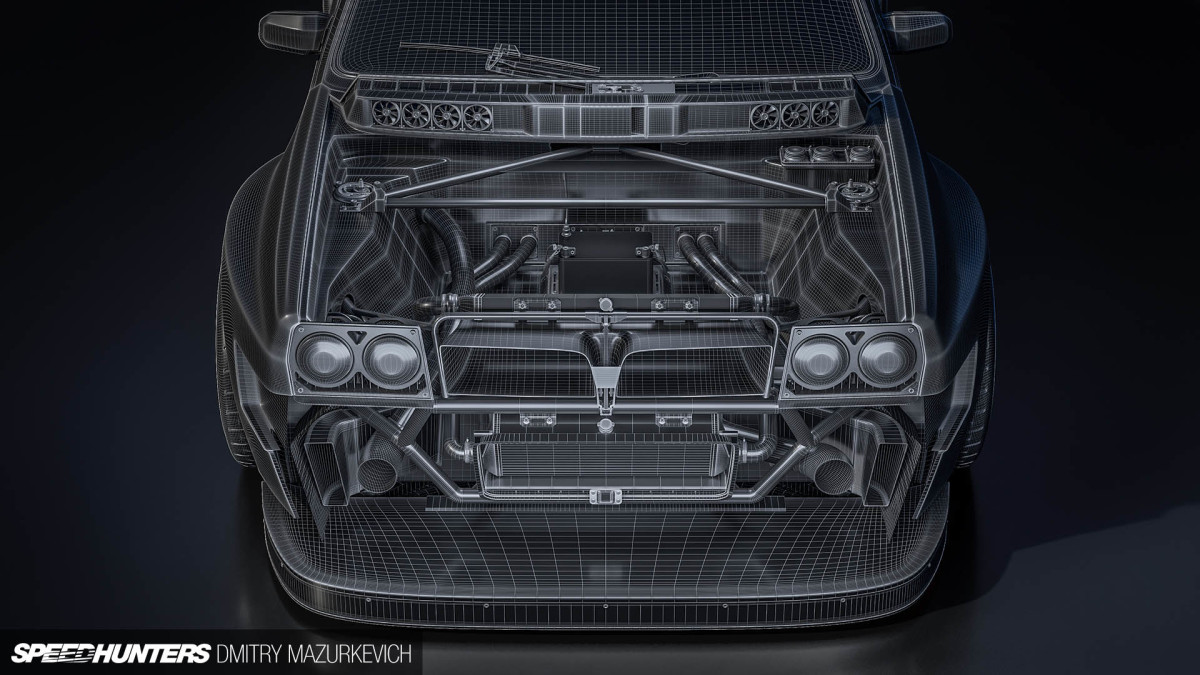
Dmitry’s idea here was to take the original Delta S4 and Group B idea and mash it up with the ECV1, evolving an evolution of a much-loved Italian high performance hatchback.
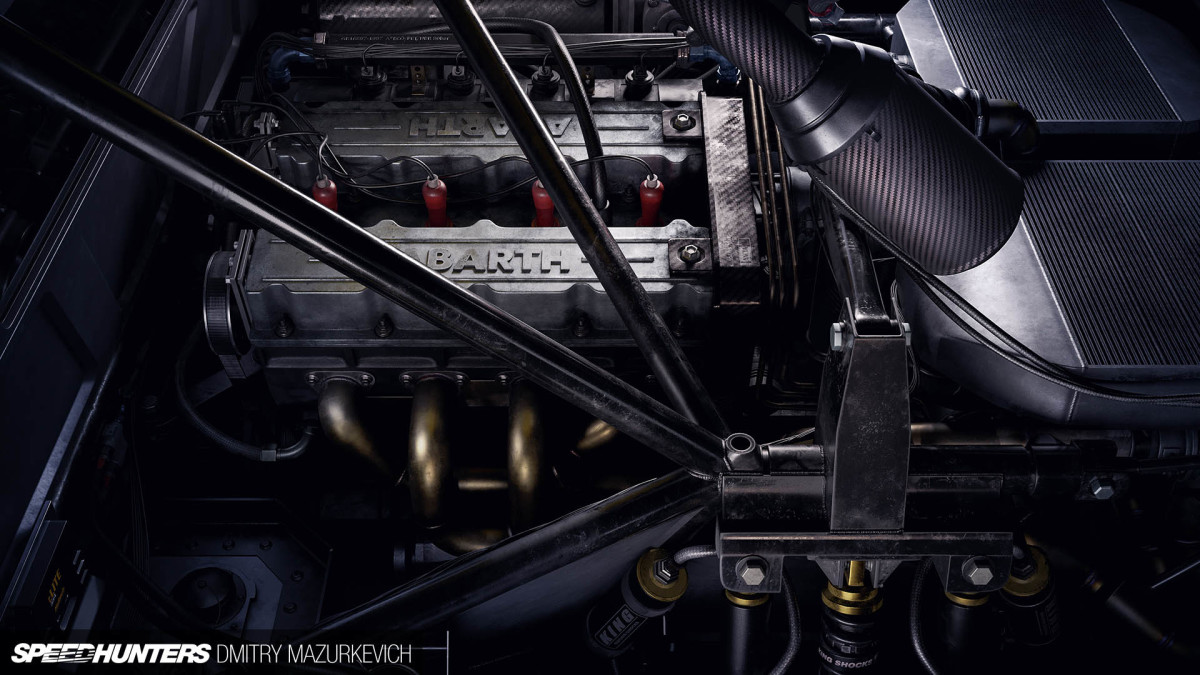
Think: a tube-frame chassis wrapped in a lightweight carbon fiber body powered by a mid-mounted, twin-charged Abarth 233 ATR 18s ‘Triflux’ engine able to rev to 10,000rpm and develop 1,000hp.
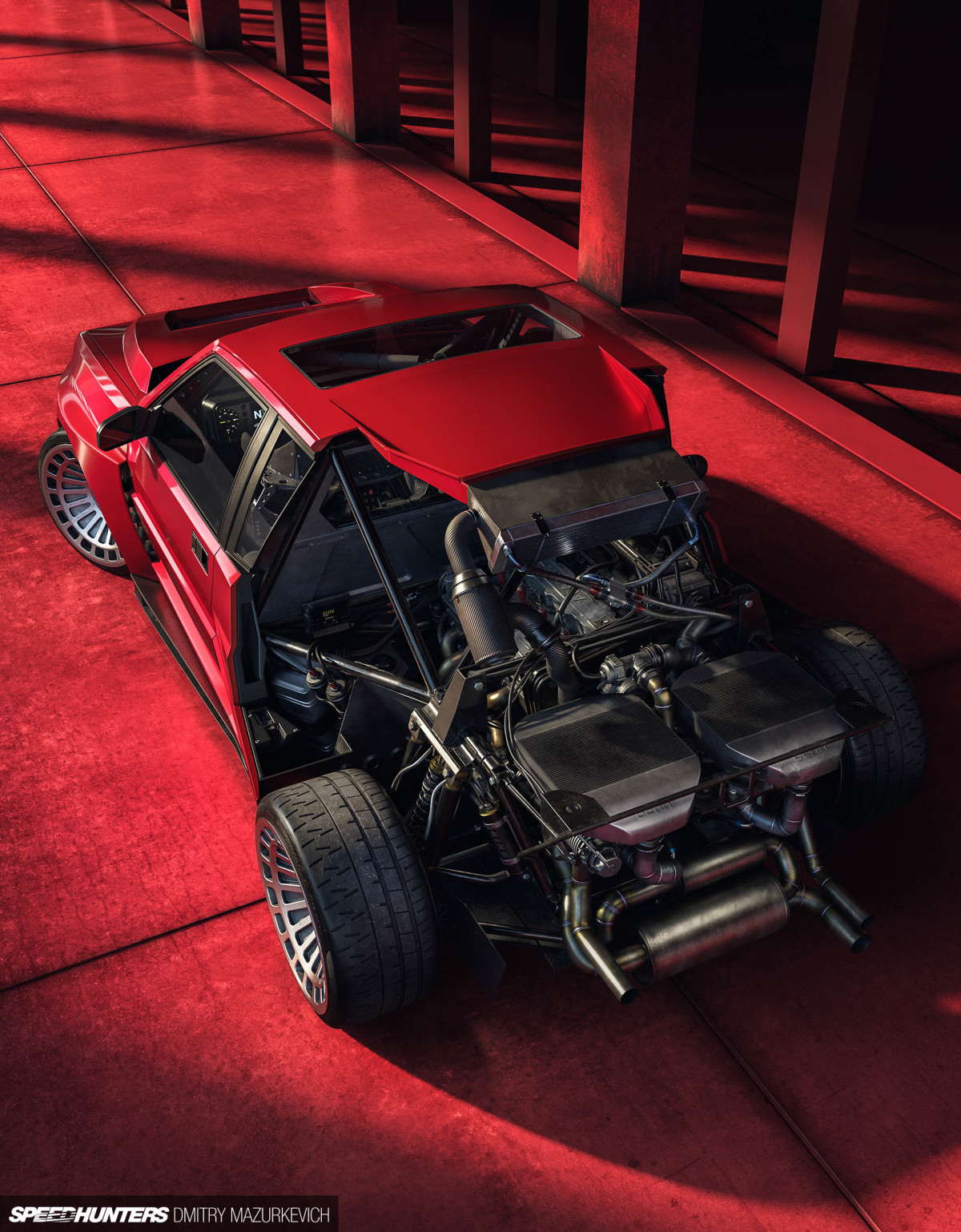
The twin-charge system remains in its original state with pneumatic actuators and release valves. An Haltech ECU and modern sensors manage the complexity of the engine in a more efficient and smoother fashion, while monitoring and logging an amount of parameters that would have been a dream back in the Group B Delta’s era.
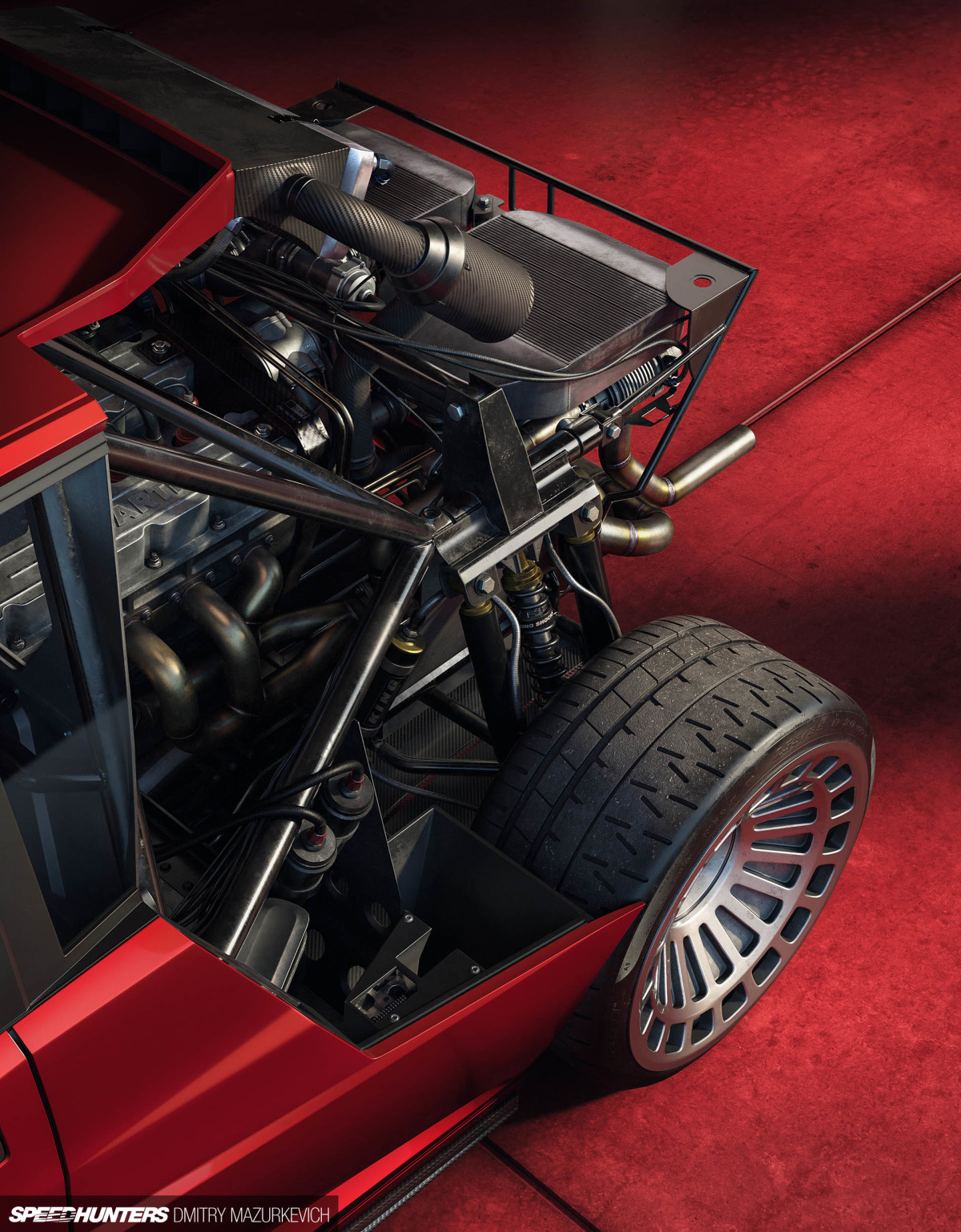
The rear quarter and roof vents supply the engine bay with cool air, while three Behr intercoolers keep the intake charge temperature in check.
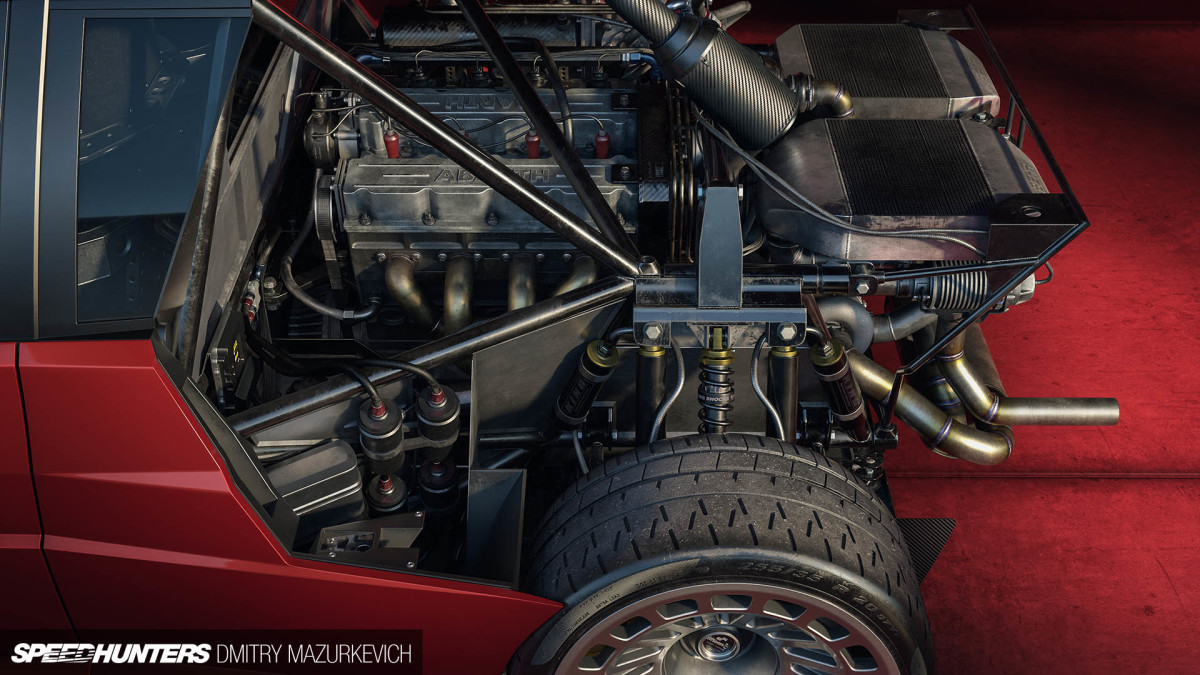
Taking a virtual step back allows you to see and appreciate the layout in its entirety.
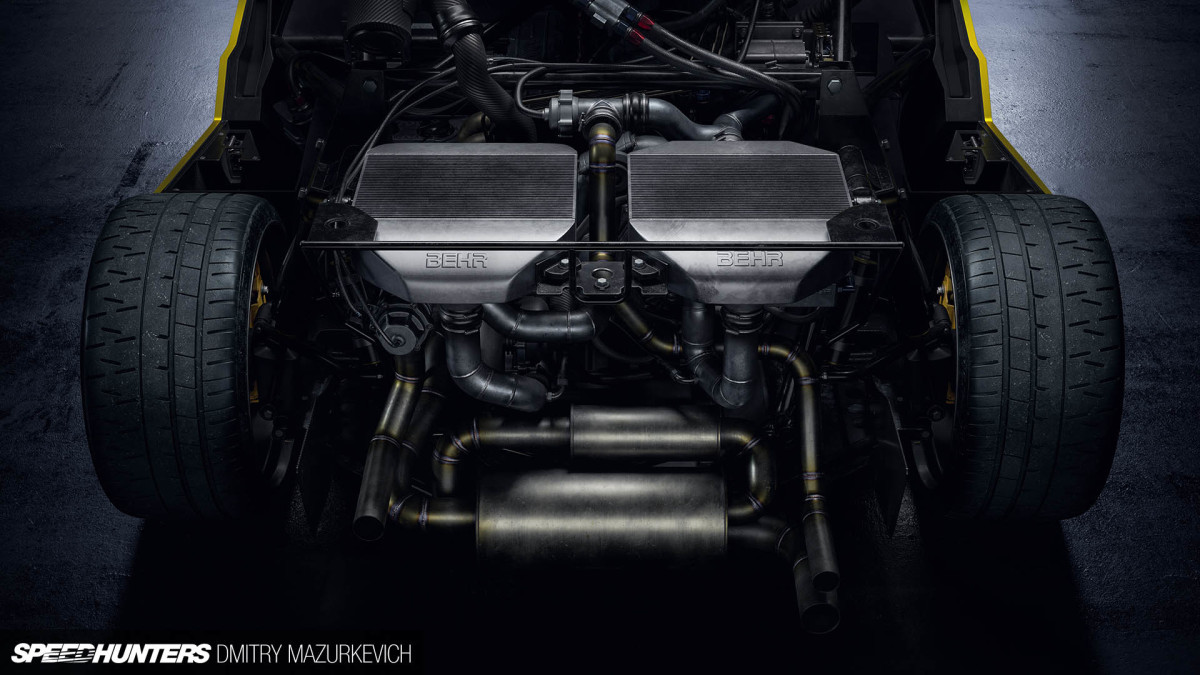
Looking at this rear end shot reminds me of the Ferrari F40 and automatically makes me wonder if Dmitry might look at that car in the same way at some point. I for one would love to see what an evolution of arguably Ferrari’s finest creation could look like.
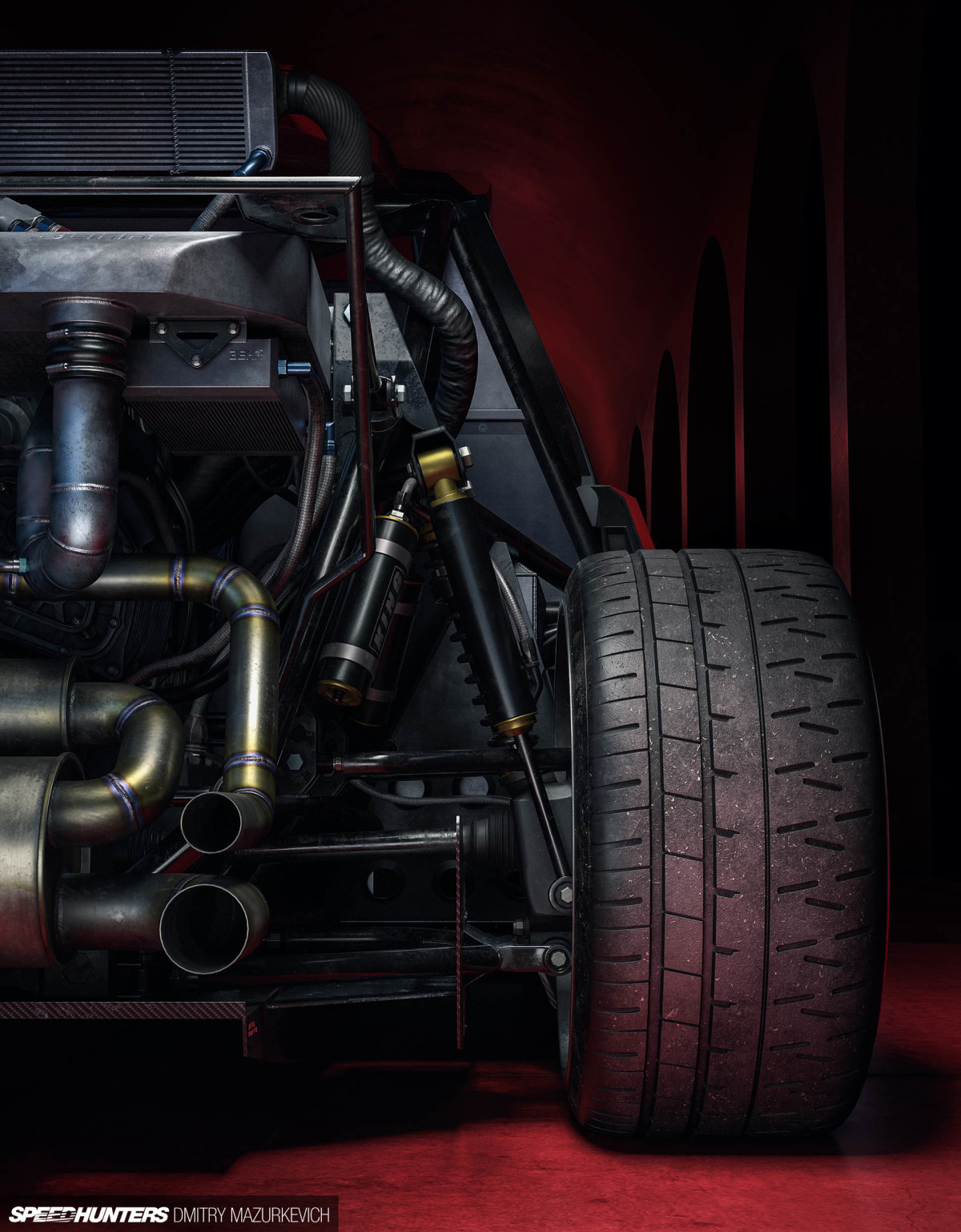
I found myself amazed at the realism of the textures; Dmitry’s digital render work really is mind-blowing.
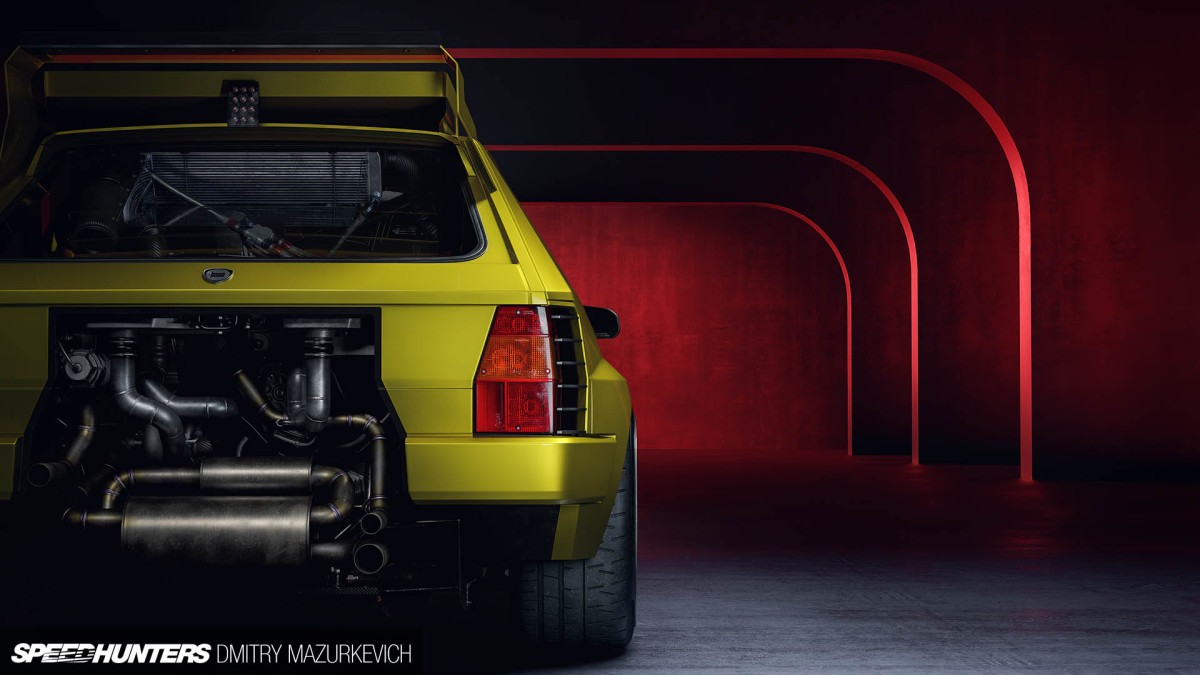
The large central opening at the rear is both technical and a design feature. It lets hot air out and shows the beauty of custom twin-loop exhaust.
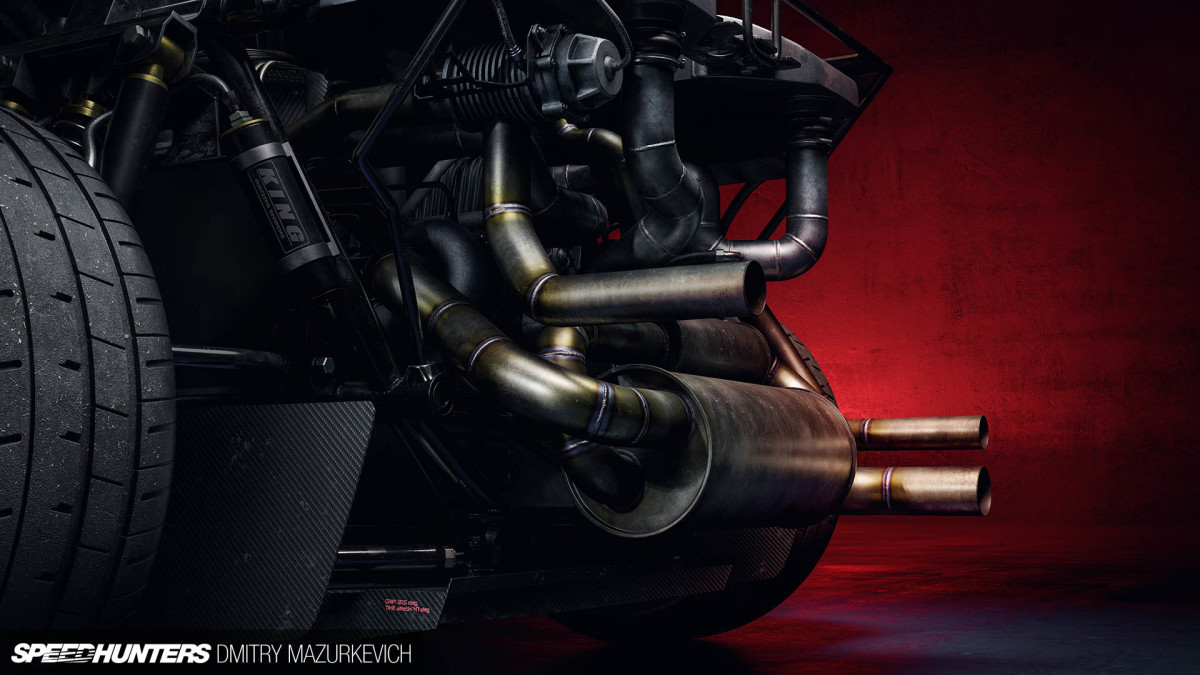
There’s no dirty air formation beneath the engine thanks to a flat underbody and rear diffuser that channels the airflow away.
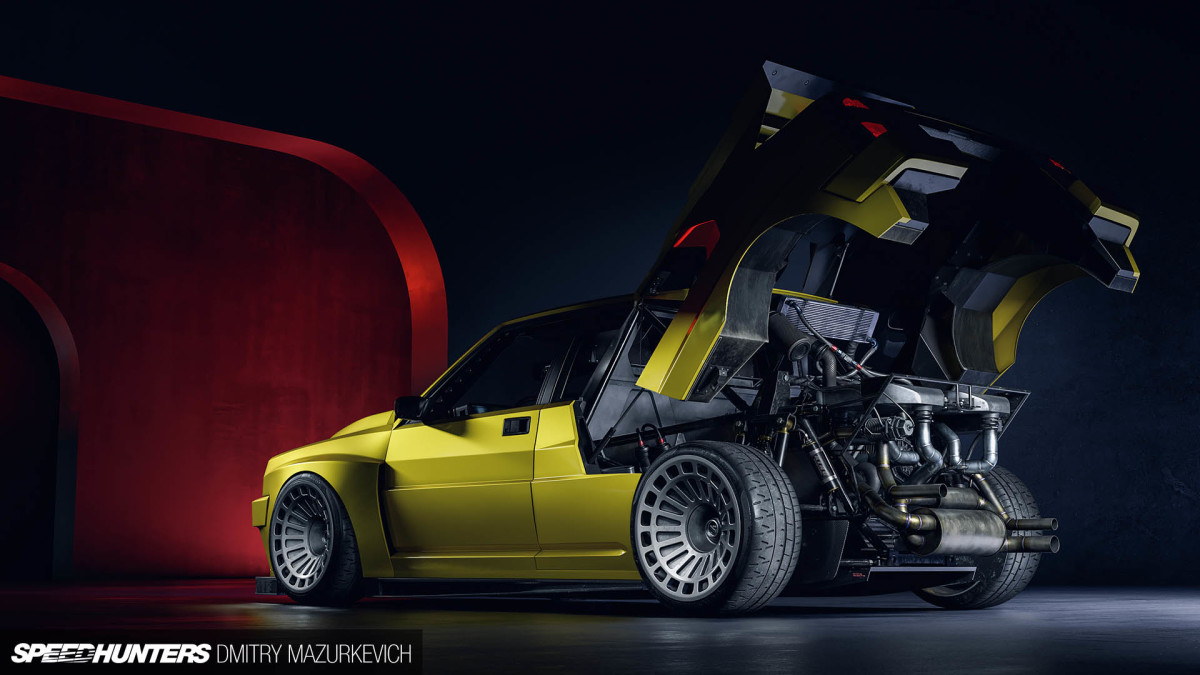
The exterior had to be highly recognizable and refreshed at the same time, and to achieve this balance Dmitry kept the front lights and grill shape stock. Same goes for the profile lines and side-body-to-window proportions, while the arches were widened to fit 295/30 Pirelli tires on 19-inch Fifteen52 wheels. The rear extended diffuser completes the grounded silhouette look with plenty of attention having been paid to aerodynamic features demanded by the engine configuration.
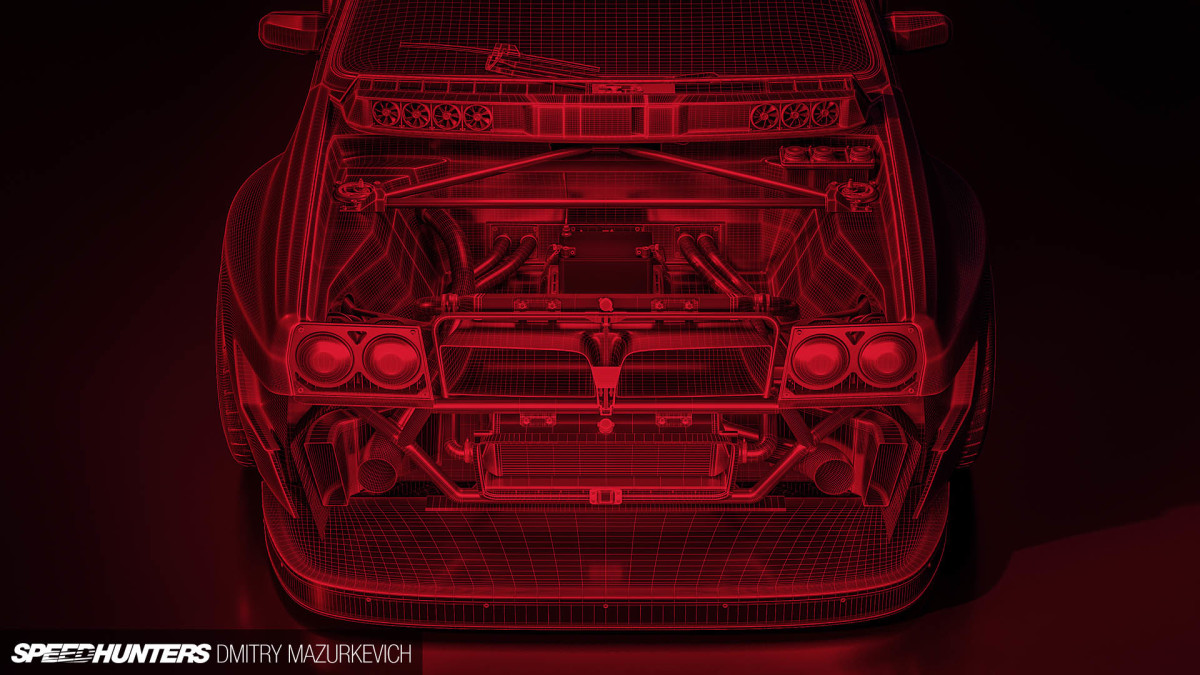
The front end was designed around dual radiators and brake cooling ducts, while the space under the hood is additionally ventilated by the fan bar.
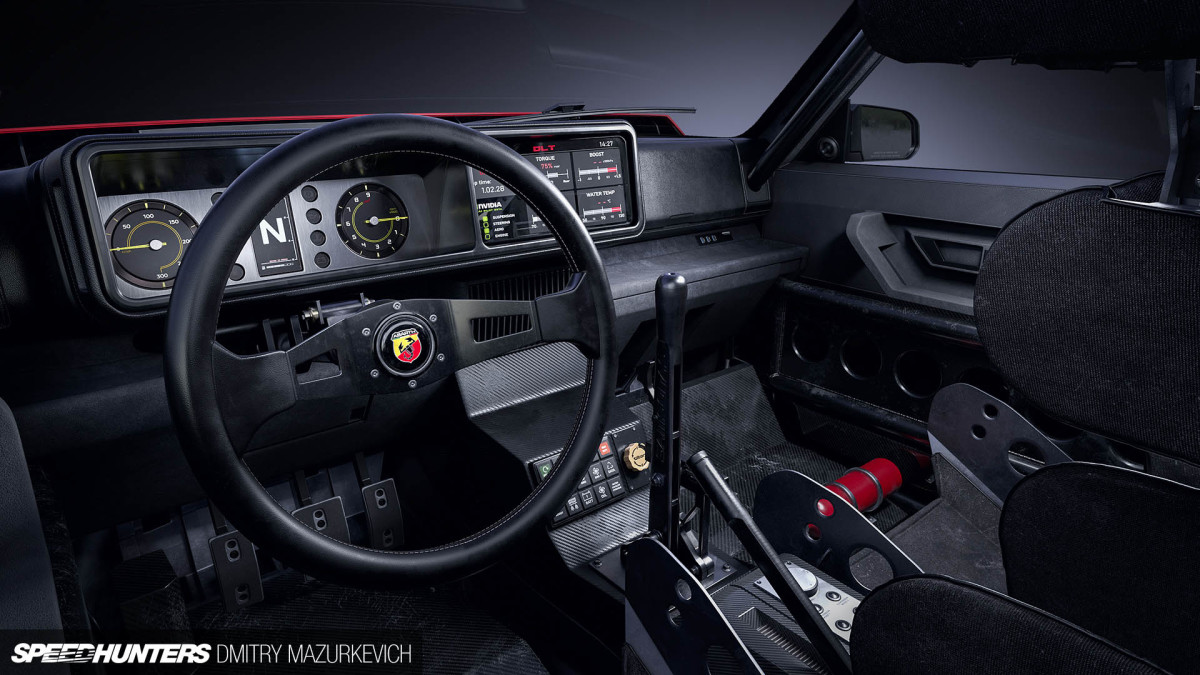
The interior is built around an adjustable dashboard extension and Woodward steering column for optimal driver’s seat ergonomics.
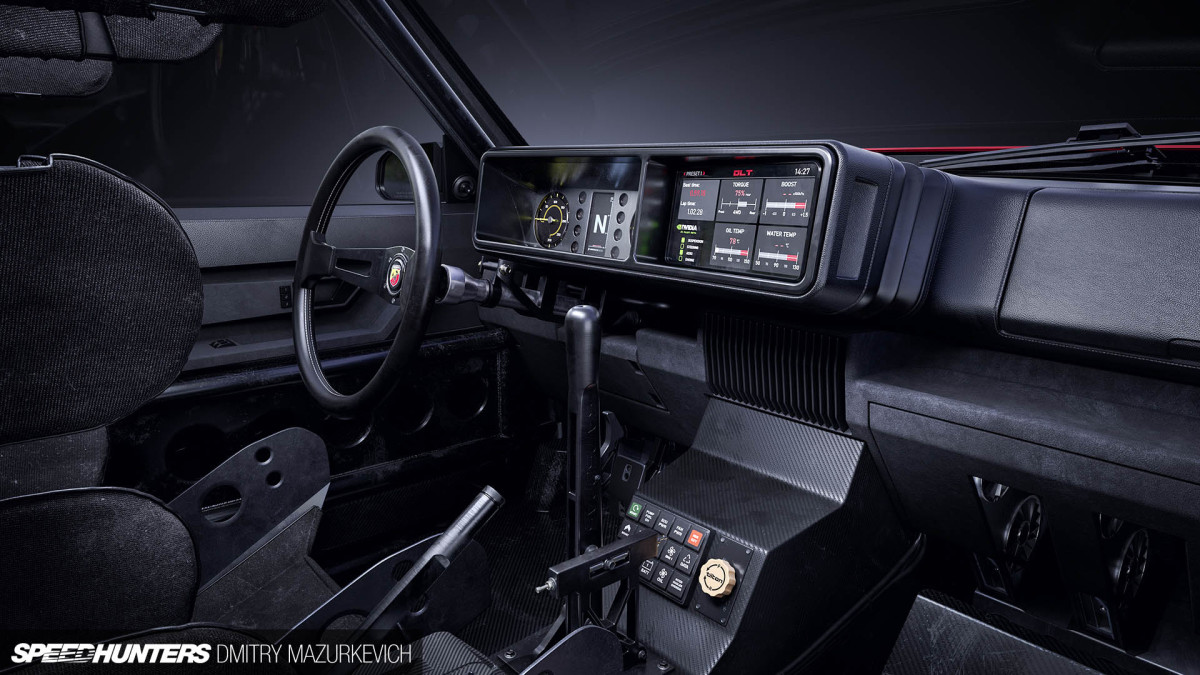
A conceptual Nvidia AI module running on x2 RTX 2080 GPUs collects real time data and 3D scans of upcoming relief from front sensors to adjust suspension, steering, aero and engine parameters.
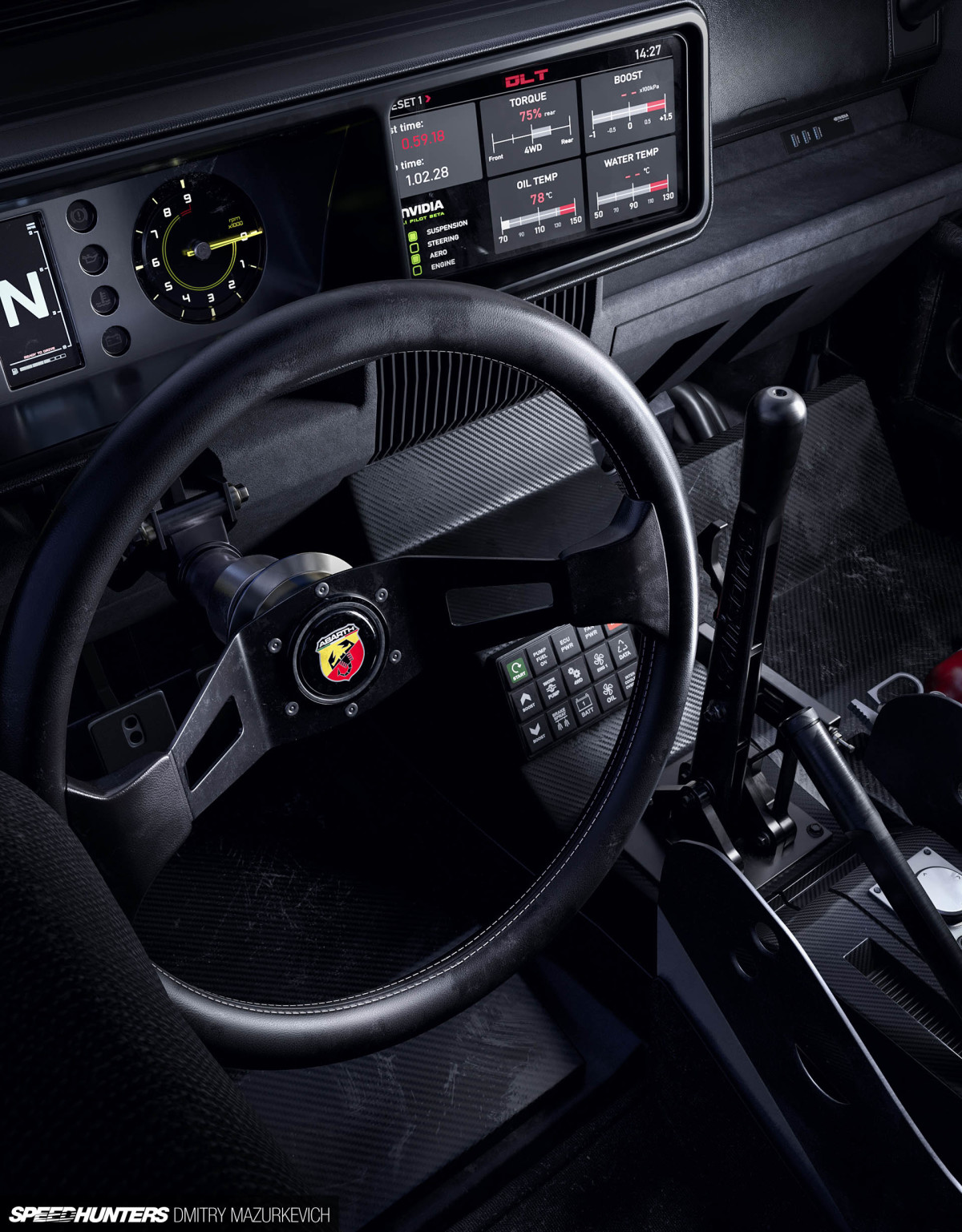
There separate USB ports for transferring logs are located near the passenger seat.
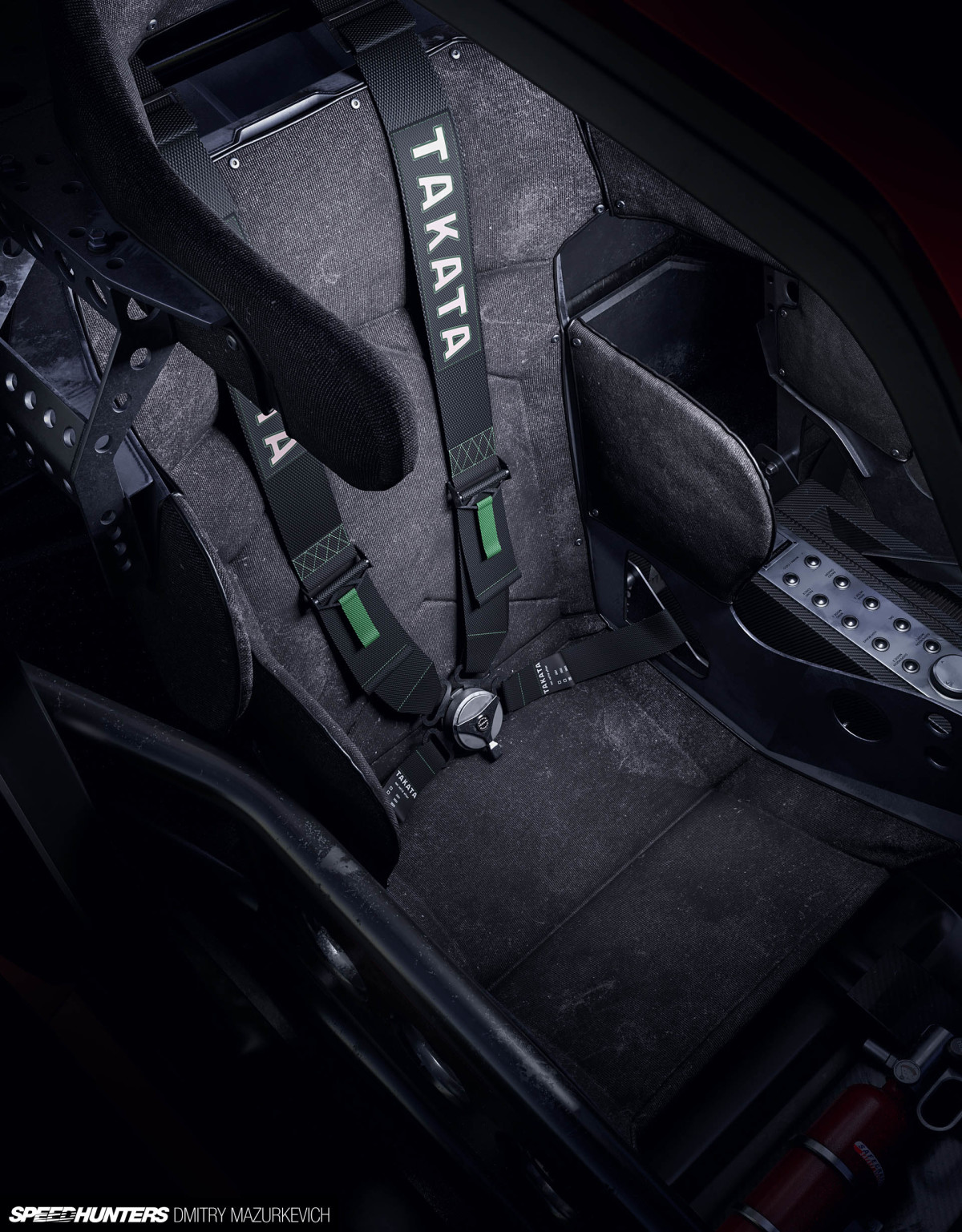
Even fabric simulation software was used to recreate the look of Kirkey seats fitted with TAKATA Racing harnesses.
[embedded content]
While these digital renders are cool enough, Dmitry also created some animated sequences of the Delta in all its glory and even in action. Hit play above to check it out.
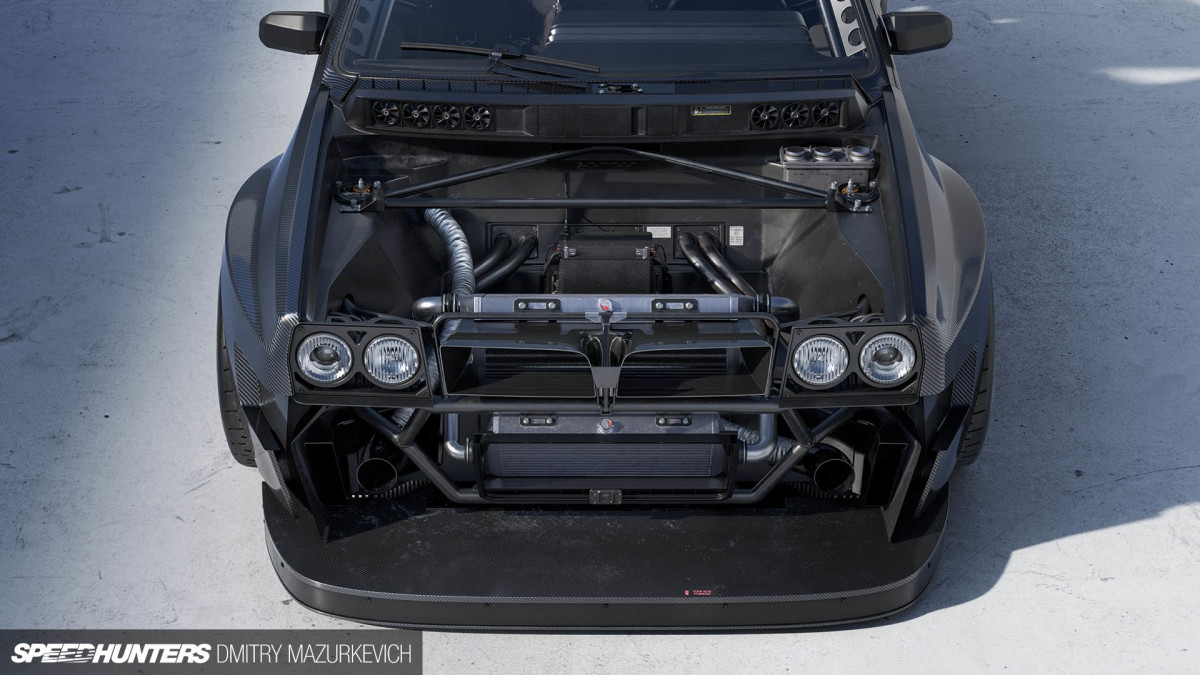
The digital realm has always resonated with us, and I am sure I’m not the only one who would like to send Dmitry a very long list of cars to work his magic on. I’ll start it off… Ferrari F40 and BNR34 Skyline GT-R please!
Dino Dalle Carbonare
Instagram: dino_dalle_carbonare
dino@speedhunters.com
Digital Art by Dmitry Mazurkevich
Instagram: Dan_Mazurkevich
How To join the IATS program: We have always welcomed readers to contact us with examples of their work and believe that the best Speedhunter is always the person closest to the culture itself, right there on the street or local parking lot. If you think you have what it takes and would like to share your work with us then you should apply to become part of the IAMTHESPEEDHUNTER program. Read how to get involved here.
OFFICIAL SPEEDHUNTERS SUPPLIERS

